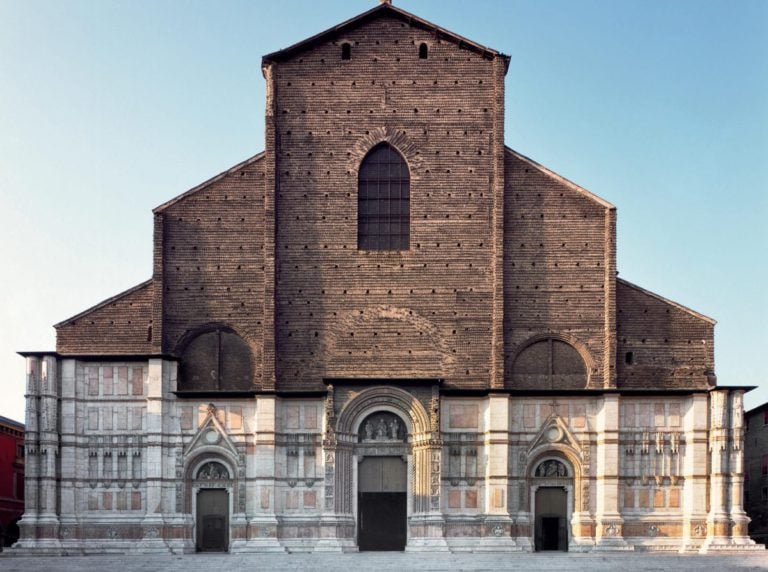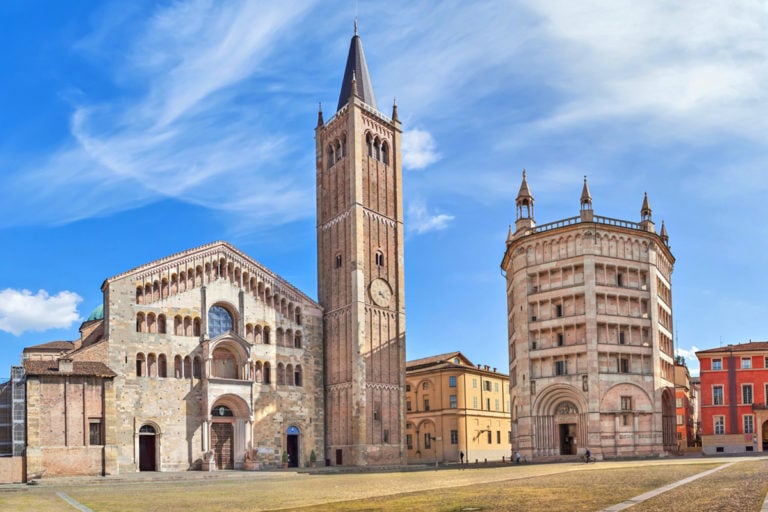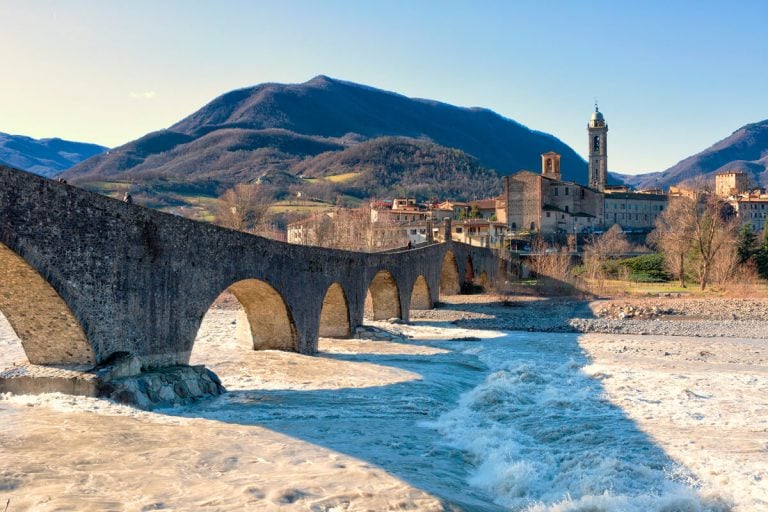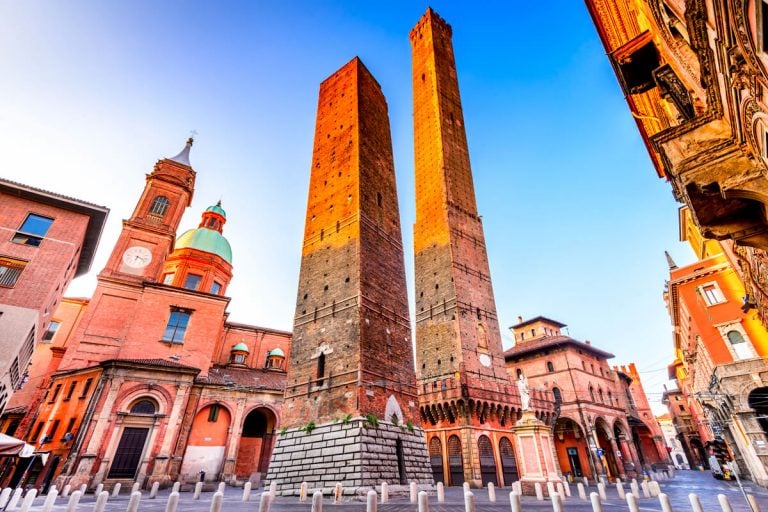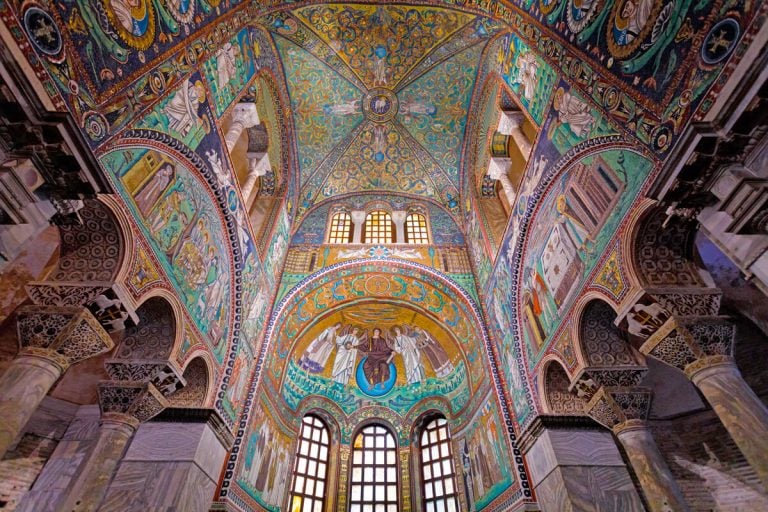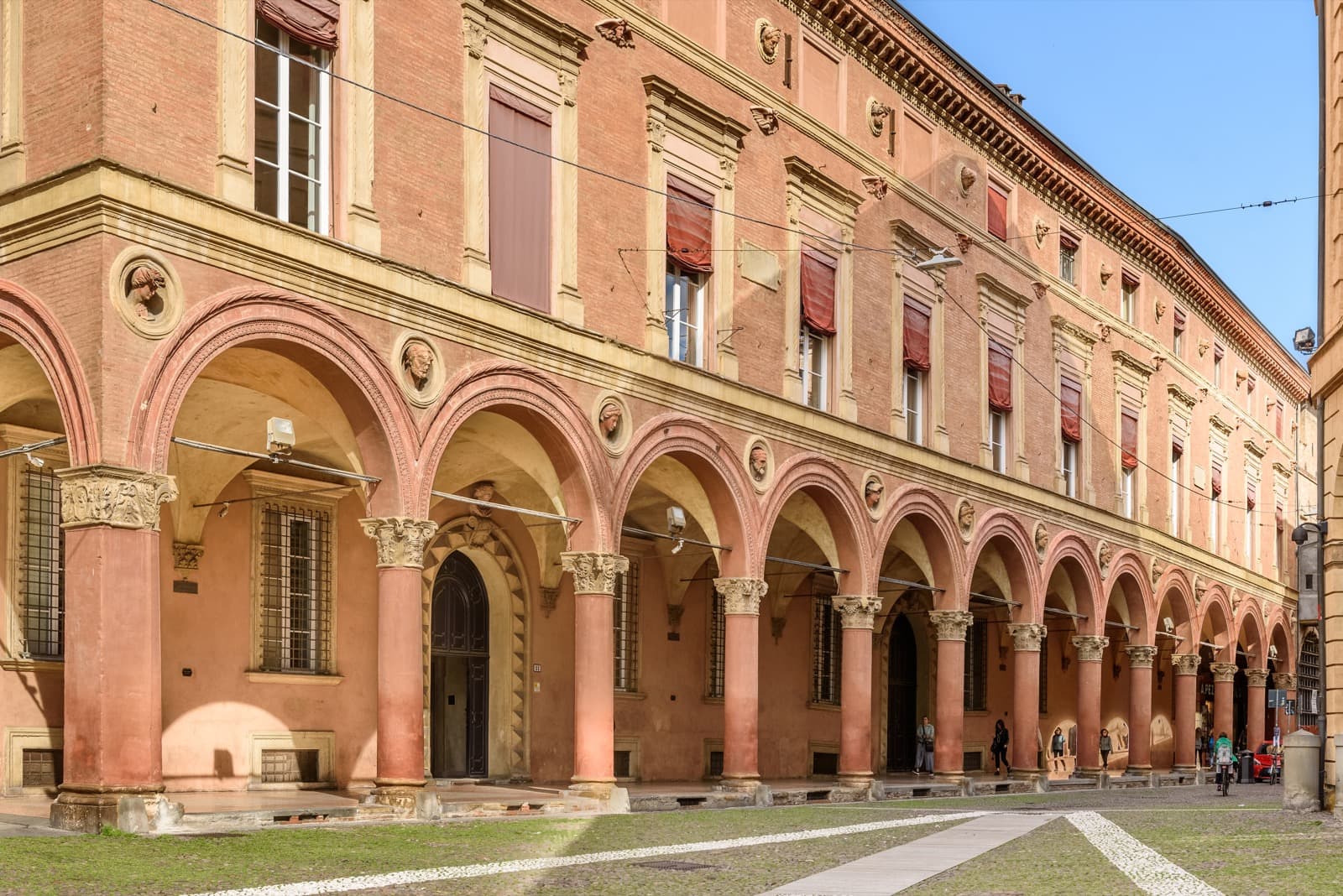Piazzas are a typical architectural feature of Italian cities. Ever since the time of the ancient Romans, they have been the main public place in historic centres, connection points for commerce, the administration of politics, religion and local justice.
These urban spaces have always represented fundamental places for social life in Emilia-Romagna.
From Piacenza all the way to Rimini, in the large regional cities along the Via Emilia, they have played a fundamental role as hubs for the large stop-off markets.
Many of these squares have been enriched with open-air works of art (such as statues, fountains and historical monuments) and at the same time public buildings for community government, to which cafés and restaurants have been added in more recent times, transforming these spaces into veritable gastronomic theaters.
Today, despite a common substratum, each square in Emilia-Romagna tells a unique story, with its timeless charm and lively atmosphere.
Piazza dei Martiri | Carpi
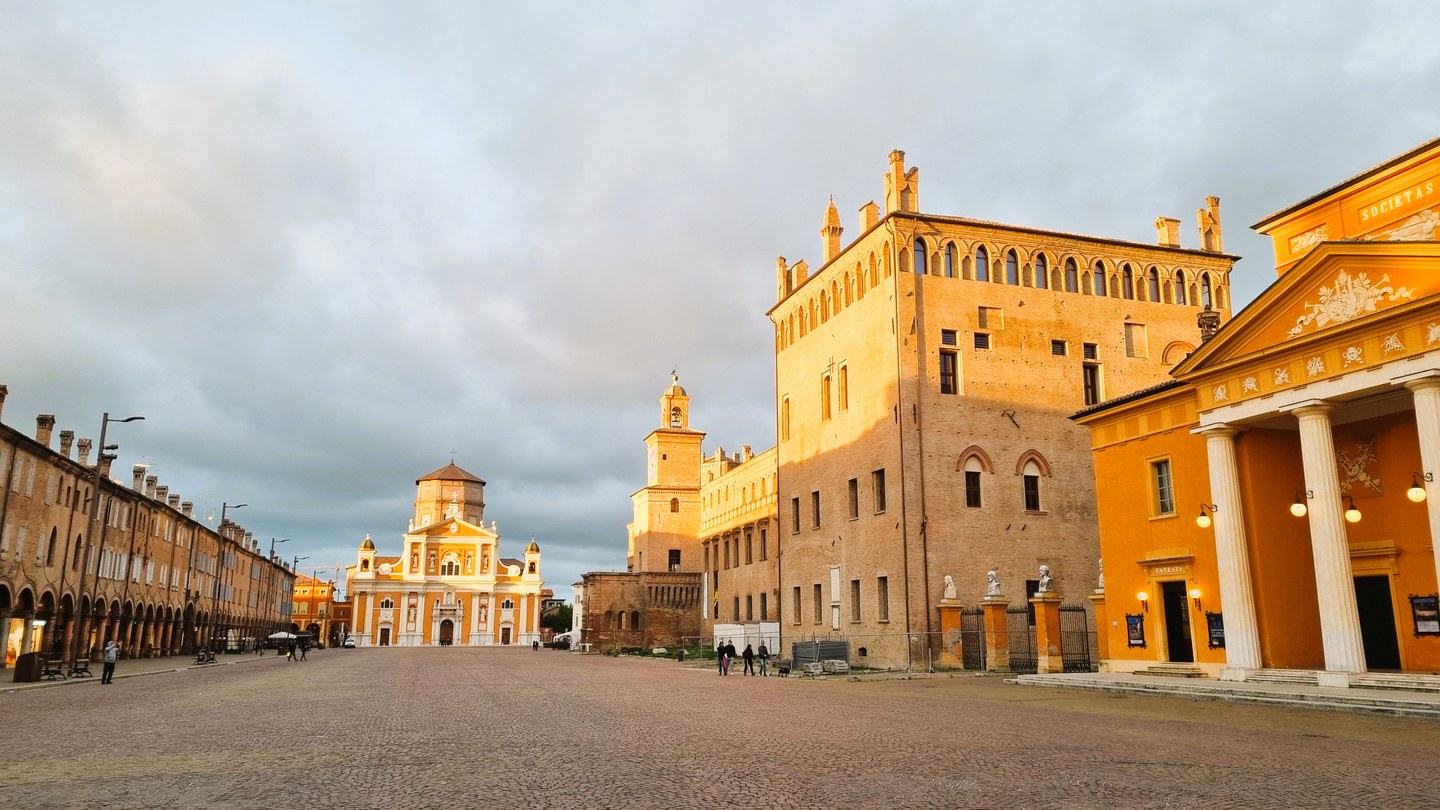
Piazza dei Martiri in Carpi (MO) is one of the largest squares in Italy (the third largest) and is an almost perfect rectangle located in the exact centre of the city.
As every square in our peninsula, it hosts on its space the symbols of spiritual and temporal power: on one side the Cattedrale dell’Assunta and on the other the Palazzo dei Pio, a vast monumental complex formed by fortresses, towers, courtyards and buildings built between the 14th and 17th centuries.
Piazza Grande | Modena
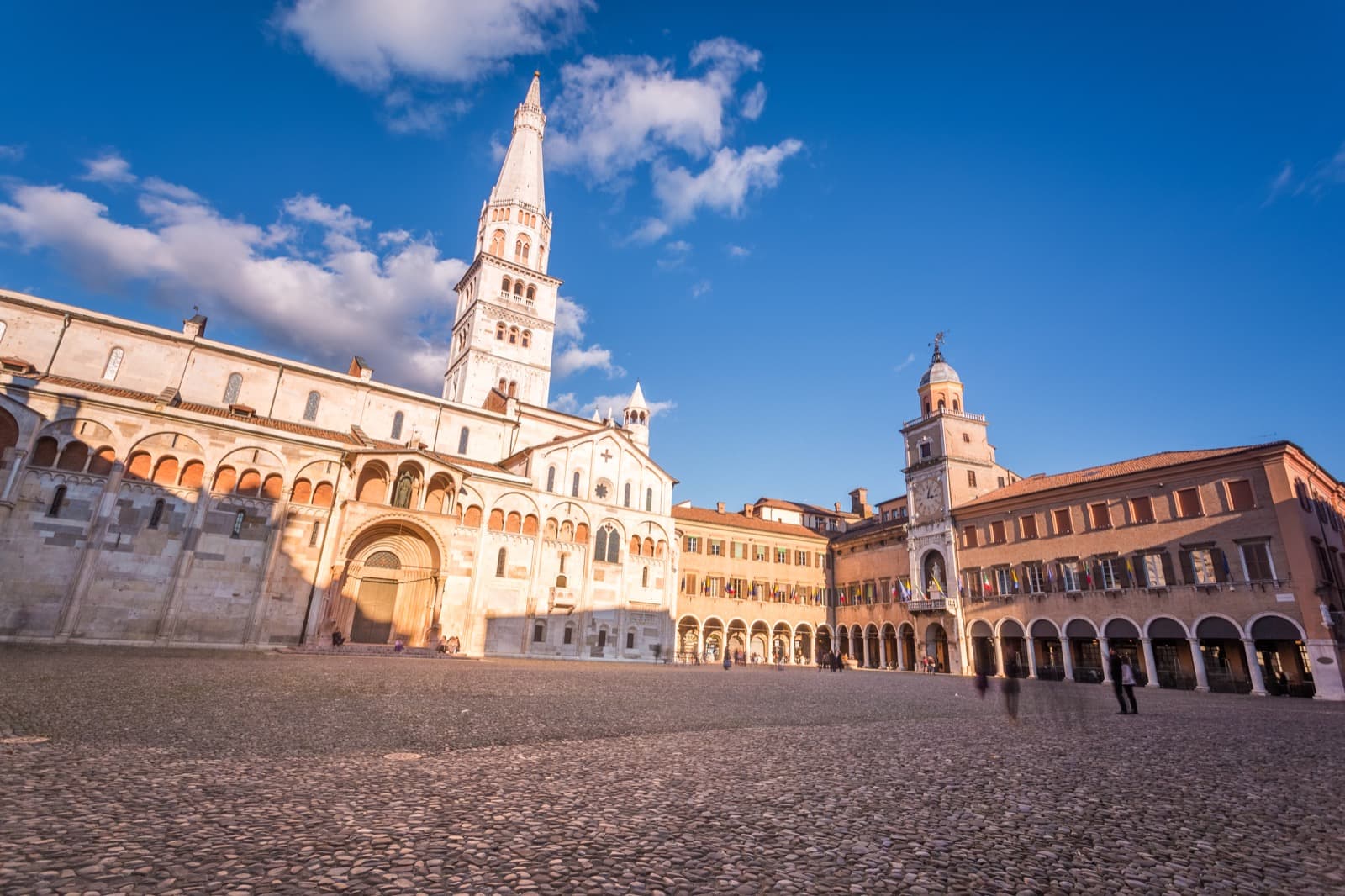
Surrounded by elegant medieval buildings, Piazza Grande in Modena is dominated by the imposing Cathedral of Santa Maria Assunta and the Ghirlandina Tower, undisputed symbols of the city. All together have been a UNESCO World Heritage Sites since 1997.
Built in the twelfth century, it was renamed Piazza Grande during the second half of the seventeenth century, confirming its central role in the management and control of civil and religious power.
In the past, however, it was also the main place for the market: under its arcades, trade exchanges took place, but also chats and exchanges of opinions on political, religious and customary facts concerning the city.
During the day, the square hosts lively markets and cultural events, while at dusk it transforms into a romantic and evocative place thanks to the cafés that enliven its perimeter.
The citizens of Modena are very proud of their square; also the tourists are attracted by its majesty and the atmosphere steeped in history that can be felt here.
Piazza Maggiore | Bologna
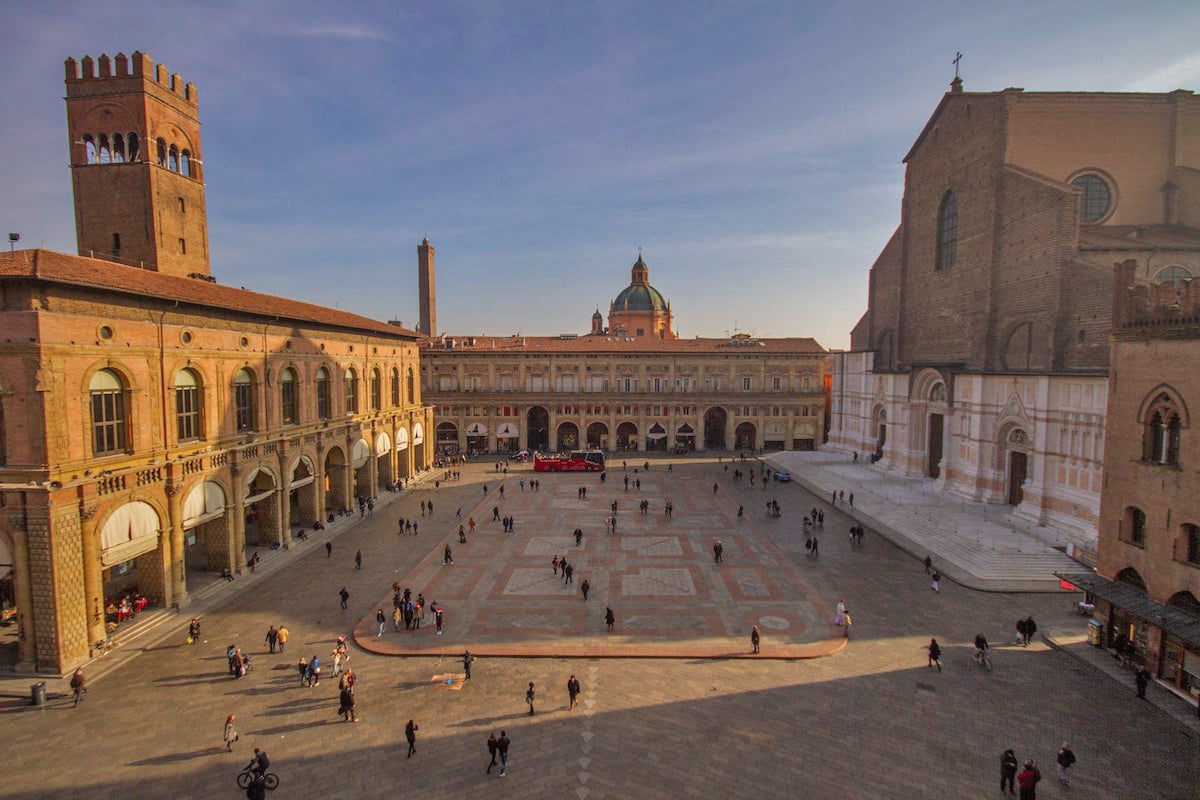
115 meters in length and 60 meters in width, these are the size of Piazza Maggiore in Bologna, built from the 13th century A.D. onwards in the centre of the city.
It is overlooked by the Palazzo del Podestà and the Basilica di San Petronio, the façade of which was never finished. Despite what many believe, it’s not the city’s cathedral, represented instead by the Chiesa di San Pietro a short distance away.
Piazza Maggiore is one of the first squares built in Italy as a place of public representation, and is even earlier in time than Piazza della Signoria in Florence or Piazza del Campo in Siena.
Piazza Trento-Trieste | Ferrara
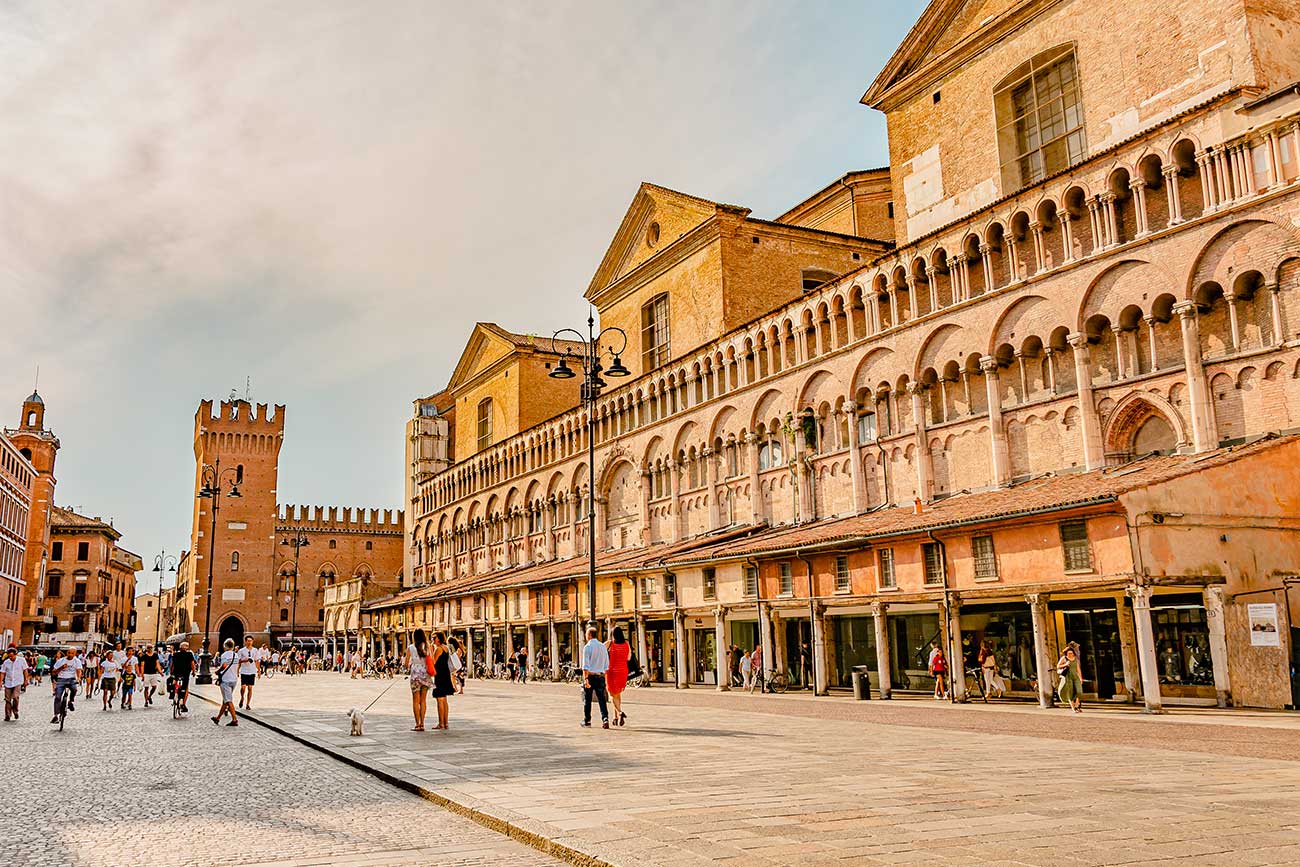
Among Ferrara‘s architectural gems is Piazza Trento Trieste, whose name is linked to two important events in Italian history, the annexation of Trento and Trieste in 1919.
Built during the medieval period, when it was nicknamed Piazza delle Erbe cause of the market of the same name that was held here, it has always played the role of the beating heart of the historical centre.
Surrounding it are the ancient seats of religious (Cattedrale di San Giorgio) and political (Palazzo Comunale) power, the latter remaining the residence of the Este family until the 16th century.
Loggia dei Merciai, once dedicated to merchants’ shops, runs along the side of the Cathedral; on the opposite side, however, is the former church of San Romano, now home to the Cathedral Museum; in the centre, finally, is a long pavement of no less than 120 metres, better known as the listone.
Piazza del Popolo | Cesena
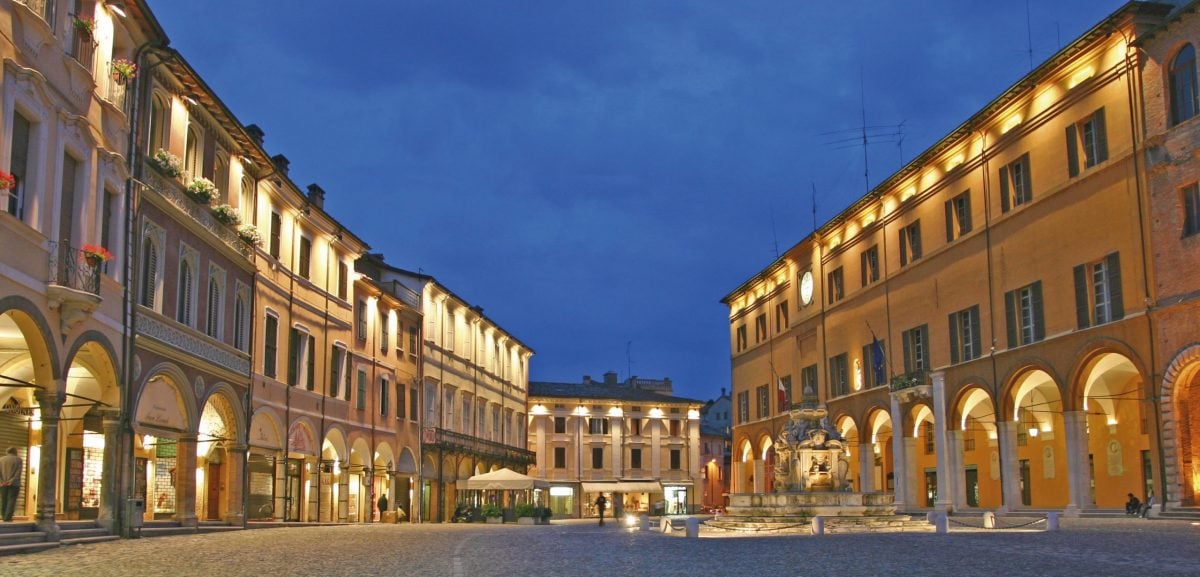
Formerly called Piazza Inferiore, Piazza del Popolo in Cesena was located along the route of the Via Emilia.
Its construction in its present form is due to Andrea Malatesta, who in the 15th century had part of the hill on which stands the famous Rocca Malatestiana, symbol of the city, levelled.
During the centuries it was the headquarter of the Signoria, then of the Pontifical Government and finally in 1722 it was destined to the Municipal Administration.
It is overlooked by the Venetian Loggetta, the Municipal Palace, the Rocchetta di Piazza with Torrione del Nuti and, in the centre, the Masini Fountain, built in Istrian stone between 1586 and 1590.
Piazza Tre Martiri | Rimini
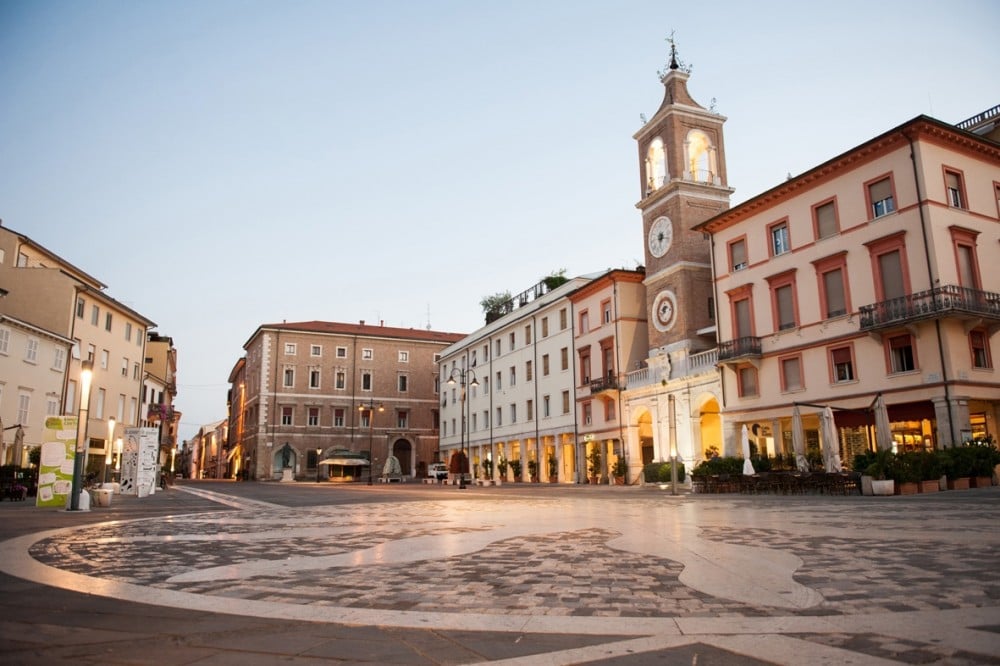
Piazza Tre Martiri traces part of the ancient Roman forum in Rimini, standing at the confluence of the two main roads: the cardo, which connected the hill to the sea, and the decumanus, which connected the Arch of Augustus to the Bridge of Tiberius.
Also known in ancient times as Piazza delle Erbe, it owes its current name in memory of three young partisans (Mario Cappelli, Luigi Nicolò, Adelio Pagliarani), who were executed here on 16 August 1944.
A 16th-century memorial stone in the square recalls the speech Julius Caesar is said to have addressed to the legions after crossing the Rubicon, and there is also a bronze statue in his memory, a copy of a Roman original.
Author

Walter Manni
Explorer and Adventurer: loves sailing the oceans, climbing the highest mountains and surfing on the waves of the web
You may also like
Churches in Emilia Romagna: the most beautiful façades
by Davide Marino /// April 23, 2020
The Most Beautiful Churches and Cathedrals in Emilia-Romagna
by Davide Marino /// September 20, 2018
5 awesome bridges to cross around Emilia-Romagna
by Davide Marino /// January 11, 2024

Interested in our newsletter?
Every first of the month, an email (in Italian) with selected contents and upcoming events.
10 good reasons to come in Emilia Romagna
by Davide Marino /// February 22, 2018
The Unesco Cities of Emilia-Romagna
by Davide Marino /// November 8, 2018
